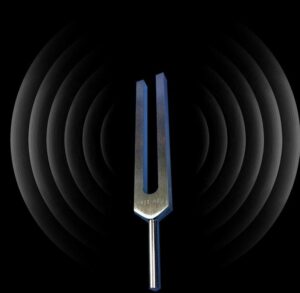In this article, we will study the various types of periodic motion examples and their detailed explanations.
A type of motion that exhibits a cyclic process or repeats the same cycle after the same time intervals. Earth revolving around the sun for every 365 days is the best example of periodic motion. Simple harmonic motion is a common and well-known type of periodic motion.
In the upcoming section, let us discuss the different examples of periodic motion in
Read more: Oscillatory motion examples
Simple harmonic motion
Simple harmonic motion is the most studied periodic motion. In a system with no resistive force (ideal system or under ideal conditions), the motion is not acted by any damping effect; thus, it takes place again and again in regular intervals of time, i.e., it’s a periodic motion. An oscillating pendulum depicts the simple harmonic type of motion.
Read more: Simple harmonic motion v/s periodic motion
A Swinging pendulum
With a fixed time interval, the pendulum performs a continuous to and fro motion, or it is said to undergo a constant swinging movement. Observed the pendulum to be passing through a mean position or an extreme position after a fixed interval of time. Since, in this case, the motion repeats after the same period, it is an example of periodic motion.

Rocking chair
It is also termed a rocker. The rocking chair is a type of chair that possesses curved ends at the bottom, which enables the person to move back and forth by just shifting their weights; this movement creates a rocking effect, and the motion is periodic; hence it depicts the periodic type of motion.

Earth Revolution
As already mentioned, the earth revolves around the sun. To complete one revolution, the earth needs 365 days and 6 hours. This motion of the earth around the sun keeps repeating; this is an interpretation of periodic motion because it is not affected by any restoring force such as friction.

Rotation of earth
Along with revolving around the sun, it also rotates about its axis every 24 hours; this is a continuous motion retaking place after every 24 hours, which implies that it is a periodic motion having no restoring force acting on it. Hence, it can be taken as an example of periodic motion.
Revolution of an electron
Around a positively charged nucleus, the electron is said to revolve without any disturbance due to friction in a periodic manner. Thus it’s a periodic motion repeated repeatedly in a certain period.

Revolution of the moon
We know that the earth similarly revolves around the sun; the moon is also said to be revolving around the earth, not being acted by any force that would interrupt the motion. Both the motions are identical and are found to be repeating after a specific interval of time.
Tuning fork
A tuning fork is a U-shaped instrument usually made of steel (or any other elastic metal). When it is sriked against a surface, it starts vibrating, resonating with a constant pitch. Such exhibited vibrations are periodic. Hence it shows a periodic motion.

A propeller
Rotating hub and blades constitute a propeller forming a helical spiral shape. The set-up is set to rotate at a pitch and is considered a periodic motion. The propeller is generally used to exert a thrust on the fluids like water or air so that it is possible to pump fluid through a pipe. It is widely used in the boat’s movement in the water or an aircraft through the air.
Hands in a clock
The needles or hands in a clock cover a complete rotation of 360 degrees in a fixed interval which is the cause for the calculation of time. Since this rotation of the hands is continuous repeatedly, this is an instance of periodic motion as there is no friction in the motion.

Heartbeat
On average, 60 to 100 beats are constantly seen in a normal heart in one minute. An abnormality is said to occur if the heartbeat is not even. As the heartbeat counts are constant per minute, it is periodic.
Frequently asked questions | FAQS
What is the reason for a periodic motion to happen?
The motion to be periodic the system has to be governed by a law or theory.
Newton’s first law (law of inertia) explains that the object moves without interruption when not acted by any external force; this also holds good for the concept of periodic motion.
For example, When an oscillating pendulum is lifted from its mean position, it continues to swing from the extreme position to the mean position repeatedly uninterrupted in a periodic fashion. There is no implication of force.
What makes a simple harmonic motion to be periodic?
The simple harmonic motion shows some of the criteria that make it a periodic motion.
In a system with no resistive force (ideal system or under ideal conditions), the motion is not acted by any damping effect. Thus the motion takes place again and again in a regular interval of time, i.e., it starts oscillating back and forth across the mean position, and it’s a periodic motion.
Simple harmonic motion is the most studied periodic motion. An oscillating pendulum depicts the simple harmonic type of motion. A sinusoidal wave motion perfectly interprets the harmonic motion, a periodic motion.
What do you mean by frequency in a periodic motion?
Frequency is one of the parameters to define or understand a particular type of motion.
In general, frequency is referred to the total number of times the motion takes place, or it gets repeated in a time interval of one second. A generally used basic unit to describe the frequency of an object is hertz.
The time period is also a vital parameter to gain information about a motion. Frequency and time period are related to each other in an inverse manner.
Read more: what is oscillator frequency?
Also Read:
- Statistics examples
- Condensation examples
- Exothermic reaction examples
- Hydrate examples
- Molecules active transport examples
- Damped oscillation examples
- Isolated system examples
- Non contact force examples
- Kinetic friction examples
- Eukaryotic fungi examples
Hi…..I am Harshitha H N. I have completed my master’s in Physics from the University of Mysore with a specialization in Nuclear physics. I enjoy exploring new things in my free time. My article always aims to develop and bring some value to the table with relevant topics.
Let’s connect through LinkedIn-